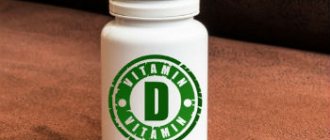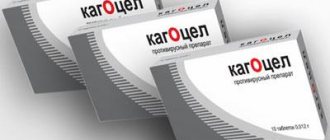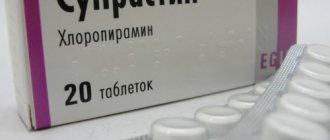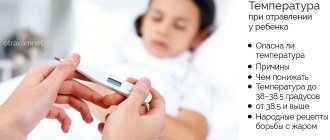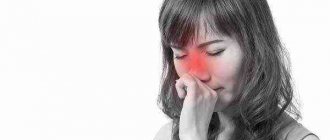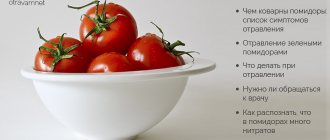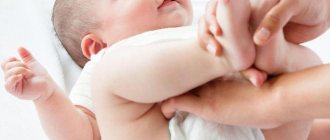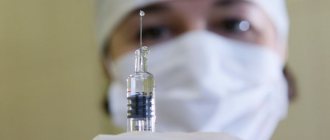What is thyroxine?
The hormone thyroxine is the main form of active components synthesized by the human thyroid gland. This hormone is produced from L-tyrosine due to its combination with iodine molecules. A characteristic property of the described substance is that it is able to penetrate absolutely all cells of the human body. In other words, there are no special target cells for it.
The main task of the hormone is to stimulate metabolic processes. This occurs through the influence of thyroxine on RNA molecules. The hormone in question performs the following functions:
- Increases body temperature.
- Controls cell growth.
- Accelerates protein synthesis.
- Increases heart rate.
- Thickens the walls of the uterus in women.
- Accelerates oxidation processes in the body.
In addition, the hormone stimulates the metabolism of vitamins in the body and takes an active part in the development of all cells of the human body.
Signs of chronic intoxication
The consequences of chronic intoxication will develop over some time while taking thyroxine: there is a decrease in body weight; irritability, even tearfulness, psycho-emotional lability; possible heat intolerance; heavy sweating; changes in sleep and wakefulness patterns; memory loss, decreased attention, fatigue; osteoporosis; cramps in the muscles of the lower extremities; shortness of breath is observed; blood pressure rises; heart rate increases; In women, the menstrual cycle may be disrupted and hair may begin to fall out.
An overdose of thyroxine in hyperthyroidism can be very dangerous.
Hormone functions
Let us name the main functions of the substance in question for the child’s body:
- Normalization of mood.
- Stimulation of physical activity.
- Heart rate monitoring.
- Acceleration of metabolic processes.
- Thyroxine takes an active part in the process of fertilization.
- Removing cholesterol from the circulatory system.
- Improving the absorption of vitamins and minerals.
- Improving the respiratory function of tissues.
- Increased tone of the central nervous system.
Thyroxine also takes an active part in the process of tissue renewal.
In addition, the hormone is able to enhance the reabsorption of fluid in the kidney tubules.
Clinical picture of thyroxine deficiency in children
The described hormone is very important for the normal growth and development of children. A deficiency of this substance poses a serious threat to health, and disruptions occur in various body systems. In particular, a lack of the hormone in the blood leads to a decrease in the intensity of all processes of the human body. As a result of this violation, all internal organs and systems suffer, the child complains of poor health. Doctors call a condition characterized by decreased hormone production hypothyroidism, that is, decreased functioning of the thyroid gland.
As in adults, the thyroid gland plays a very important role in children. Hormones responsible for the normal functioning of all organs and systems are synthesized here. Iron plays an important role in the physical and mental development of a child. It is worth noting that disturbances in the functioning of the organ in childhood are quite rare. In this case, the form of pathology can be either congenital or acquired.
You may be interested in: Low hemoglobin with normal ferritin in children
The main signs of thyroxine deficiency in a child include the following conditions:
- Decreased vision.
- Asthenia.
- Dementia.
- Muscle weakness.
- Chronic fatigue.
- Poor mental development.
Lack of the hormone prevents the child from developing properly. In this case, it is necessary to promptly diagnose this condition, find out the cause of the deviation and begin treatment of the disease.
Complications
If you ignore the problem, a number of complications may arise:
- hypothyroid coma, when shortness of breath, dizziness, loss of consciousness, slow pulse, swelling develops, and then death occurs;
- heart failure in the form of stroke, heart attack and other vascular or heart pathologies;
- decreased libido and infertility;
- During pregnancy, toxicosis, miscarriage and premature birth, severe bleeding during childbirth, and sometimes stillbirth are possible.
Norm of total and free thyroxine in children
Most of the hormone binds to blood proteins. The amount of total thyroxine in the body is about 99%. Proteins that bind this hormone are called albumins. The analysis helps determine the amount of these proteins, and therefore free thyroxine in the body.
| Patient age | Hormone norm in nmol/l |
| Up to 4 months | 70-220 |
| From 4 to 12 months | 75-205 |
| From 1 to 6 years | 77-189 |
| From 7 to 12 years | 78-178 |
| From 12 to 20 years | 76-170 |
In addition to the general one, the human body also contains free thyroxine. Its amount in the blood is very small and ranges from only 0.002 to 0.04%.
The function of this substance is to activate network formation, improve the cortical process of the body, have a positive effect on the heart muscle, and enhance metabolic processes.
| Patient age | Hormone norm in pmol/l |
| Up to 4 months | 11-28 |
| From 4 to 12 months | 12-26 |
| From 1 to 6 years | 12.5-22.8 |
| From 7 to 12 years | 12.5-21.5 |
| From 12 to 20 years | 12-21 |
It is important to note that normal levels of free thyroxine in the body may depend on the laboratory in which the test was performed. Here the specifics of equipment, reagents and other things are taken into account. In other words, there is little point in memorizing the norms given on the plate.
A specialist should decipher the results, taking into account all the data from the medical examination and the patient’s complaints.
Principles of therapy
To compensate for the lack of thyroxine, it is necessary to resort to taking hormones and iodine-containing medications.
Among other techniques:
- Replenishment of the lack of active substance by taking artificial thyroxine, which is quickly absorbed and does not cause side effects. Take it once a day, but only at a strictly defined time. Before starting the course, you need to undergo a full examination; it is also important to follow the dosage and undergo a blood test to determine the concentration of the hormone at least four times a year. Since exceeding the level of thyroxine is also dangerous for the body.
- Compliance with dietary nutrition.
- Taking homeopathic medicines prescribed by a doctor.
You can refuse hormonal therapy, but only if thyroxine is reduced slightly and due to iodine deficiency.
Among the folk techniques you can resort to:
- taking iodine (buy at a pharmacy). 5 drops of the solution should be mixed with 100 g of vodka. Take a tablespoon twice a day, an hour before meals, for a week;
- eat seaweed seasoned with dry wine and iodized salt once a day;
- eat figs, but no more than three per day. The day before, you need to pour water over the fruits, leave for a couple of hours, first eat the figs, and then wash them down with the water in which they settled;
- chop 100 walnuts, add a couple of tablespoons of honey and 30 g of garlic. Use three times a day before meals;
- take feijoa with honey.
Preparing for the test
Venous blood is used to assess the concentration of thyroxine in the patient's blood. The study is carried out in laboratory conditions using the necessary reagents and equipment. Before submitting biological material, you should prepare. It is important to remember the following:
- The day before blood sampling, it is important to avoid intense physical activity.
- It is important to try not to get nervous, as mood swings can skew the test results.
- You should not take medications containing iodine. If the child has taken such medications, the attending physician must be informed about this.
- Before donating blood, you should not eat or drink; you should only drink a small amount of clean water.
- Biological material is collected until 11 o’clock.
If your child is nervous before the test, it is important to try to calm him down.
You might be interested in: What blood type will children have if their parents have 3 negative and 3 positive
The importance of this procedure should be explained to the young patient. Following these simple recommendations will help you get the most reliable results.
1246847579
Therapy for hyperthyroidism
Before starting treatment, you need to conduct a comprehensive examination and identify the cause of the disorder.
Taking medications is aimed at reducing the activity of the hormone, but before this a series of tests are prescribed, for example, an ultrasound or blood donation to determine the level of thyroxine.
There are two treatment options - medication and surgery. In the first case, thyreostatic and hormonal medications are taken. You also need to follow a diet with minimal iodine content.
An operation is prescribed if the goiter is too developed and enlarged. After this, radioactive iodine therapy may be required.
What does thyroxine deficiency lead to in the body?
The lack of this substance in the body provokes negative consequences for the patient and leads to disruption of the functioning of all organs and systems. The patient suffers from low blood pressure, and in the absence of proper treatment, a severe form of pathology can develop - myxedema.
Reasons for the shortage
Thyroxine deficiency in children is rare, but the disease still occurs in practice. Common causes of the disease include the following:
- Surgical intervention.
- Transferring radiation therapy.
- Pituitary gland injuries.
- Lack of foods containing iodine in the child’s diet.
- Insufficient protein content in food.
- Taking certain hormonal medications.
- Head injuries.
- Sharp fluctuations in body weight.
- Poisoning the body with toxins.
Practice shows that middle-aged women suffer more from a lack of the described hormone.
Clinical picture of the disease
If there is a deficiency of thyroxine in the body, the symptoms will depend on the severity of the pathology and concomitant diseases.
Let's name the signs that occur most often:
- Dryness of the dermis and oral mucosa.
- Excess body weight.
- Decreased memory and concentration.
- Poor performance at school.
- Abnormal stool, frequent constipation.
- Hair loss and brittle nails.
- Impaired functioning of the digestive system, stomach ulcers are rare.
- Edema.
- Decreased blood pressure, apathy, lethargy, weakness.
- Heart rhythm disturbances.
If such symptoms develop in a child, it is important to consult a doctor as soon as possible and undergo a medical examination.
Treatment for hormone deficiency
Methods of treating the disease are selected by the doctor after conducting an examination, collecting an anamnesis and making a diagnosis. In this case, the main type of treatment is taking additional hormones and drugs containing iodine. Let's name the main methods of therapy:
- The patient is prescribed to take the artificial hormone L-thyroxine. The medicine, as a rule, is well tolerated by children and adults, and rarely causes complications or negative consequences. The dosage is selected by the pediatrician taking into account laboratory test results.
- The patient must follow an individual diet that includes sufficient amounts of protein and foods containing iodine.
- Often the patient is prescribed homeopathic remedies, as well as medicinal herbs.
Taking seaweed is considered very useful for pathology. This product should be included in your child's daily diet.
Possible complications
It is important to promptly diagnose and treat any hormonal disorders. If the necessary therapy begins too late or is absent altogether, this can cause serious complications in the child.
Let's name the most common complications:
- Hypothyroid type coma. In this case, the patient experiences a drop in blood pressure, a decrease in pulse, loss of consciousness, swelling, and breathing problems. In the absence of resuscitation measures, death occurs.
- Development of infertility and decreased potency in adulthood.
- The development of stroke, heart attack, atherosclerosis and other pathologies of the heart and blood vessels.
- Children suffering from the pathology often develop cretinism.
- Due to muscle weakness and decreased motor activity, rickets may develop.
You may be interested in: Coarctation of the aorta in a child
Such complications arise due to impaired functioning of the thyroid gland, a decrease in oxidative processes in the body and protein synthesis.
Malfunctions of the thyroid gland lead to impaired physical and mental development in children.
Medical assistance in case of drug overdose
What should I do if my condition begins to noticeably worsen after taking the medicine? If a person feels unwell, weak or any other symptoms that have not previously appeared, you should consult a doctor. If you feel satisfactory, you should come to the clinic for an appointment or call a doctor at home. If the condition worsens sharply, you should immediately call an ambulance .
In what cases is there a need for urgent medical intervention:
- A child, an elderly person, a pregnant woman were injured;
- Severe pain in the heart, irregular heart rhythm;
- High blood pressure;
- Profuse diarrhea mixed with blood;
- Neurological pathology ─ paresis, paralysis, convulsions;
- A depressed state in which a person does not respond to external stimuli;
- Unconscious state.
There is no specific antidote to L-thyroxine . Therefore, help lies in eliminating the symptoms of poisoning. Depending on the severity of intoxication, a person can be treated at home or in a hospital, in the endocrine department.
Symptomatic drug therapy:
- To restore heart rhythm, adrenergic blockers are prescribed (increase sympathetic tone);
- For nervous disorders ─ sedatives;
- For high blood pressure - antihypertensive drugs;
- To reduce temperature ─ antipyretics.
Neuroleptics should absolutely not be used as sedatives. They will intensify the symptoms of thyrotoxicosis and increase the risk of developing arrhythmia. To suppress the effect of large doses of thyroxine, glucocorticosteroids are prescribed.
In severe cases, hemosorption is performed - purification of the blood from poison and toxic substances. This procedure is used in patients in the stage of unconsciousness or coma. The blood passes through a special apparatus, where it reacts with the sorbent and is thus purified.
Another blood purification procedure is plasmaphoresis. The victim is connected to a special apparatus, and a certain volume of blood is pumped through it. In this case, plasma containing a large amount of thyroxine is separated, and the remaining components are returned to the bloodstream.
Consequences of excess thyroxine
Sometimes the situation is the opposite, and in the child’s body, on the contrary, there is an excess production of the described hormone.
Often, concomitant diseases are detected, in particular, nodular diffuse goiter, Graves' disease or thyroid adenoma.
Why is there an excess of thyroxine?
Among the common causes of the pathological condition are the following:
- Long-term use of certain hormonal drugs.
- Cervical osteochondrosis.
- Diabetes.
- Pathologies of the liver and kidneys.
- Autoimmune diseases.
- Too many iodine-containing foods in the diet.
- Long-term use of products containing iodine.
Considering the reasons for the deviation, it can be noted that this condition is not typical for children and an excess of the hormone is extremely rare.
Treatment methods
When the level of the hormone in the blood is high, medications are used whose action is aimed at blocking the production of thyroxine. In addition, the patient is prescribed a special diet that excludes a large number of foods containing iodine. In severe cases of pathology, surgical intervention is used.
Possible complications
An excess of the hormone can lead to such a dangerous condition as thyrotoxic crisis. Its symptoms include an increase in body temperature to 40-41°C, increased blood pressure, heart rhythm disturbances, difficulty breathing, and indigestion.
Without help, death occurs. In addition, complications may be of the following nature:
- Malfunctions of the central nervous system.
- Visual impairment, protrusion of eyeballs.
- Women experience infertility, men have decreased libido.
- Bronchospasms and Quincke's edema are often observed.
- Many patients suffer from osteoporosis.
If negative symptoms develop, it is very important to seek medical help as soon as possible and undergo a comprehensive examination. If the pathology is detected in a timely manner, it is possible to take its course under control and eliminate complications.
Expert opinion
Ksenia Dunaeva
User experience expert and comment moderator. Higher medical education and more than 5 years of actual practice.
Ask Ksenia
Hormones play a very important role in the human body. They take part in the functioning of all organs and systems. A variety of provoking factors, in particular stress, can lead to disruption of their levels. To prevent this from happening, it is important to try to maintain moral calm in any current situation.
Analogs, reviews
"L-thyroxine" has effective analogues, one of which is "Eutirox". What is better - "Euthirox" or "L-thyroxine"? Reviews show that these drugs are dosed the same way and are prescribed to treat the same disorders. The drugs have the same contraindications, which means that the action of Eutirox is similar to the action of L-thyroxine. Both drugs are effective, which means it doesn’t matter what to choose - Eutirox or L-thyroxine. Reviews show that the original can be replaced with an analogue. Structural analogues, in addition to the drug "Eutirox", include "L-thyroxine 50" and "L-thyroxine 100", "Levothyroxine", "Bagotirox".



